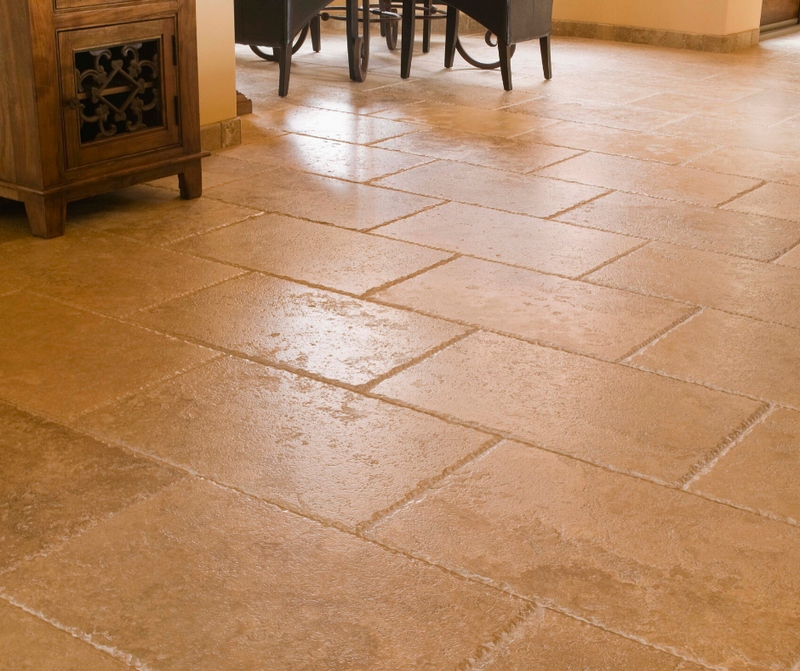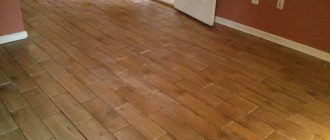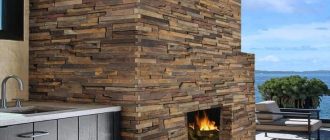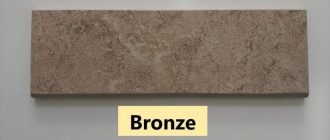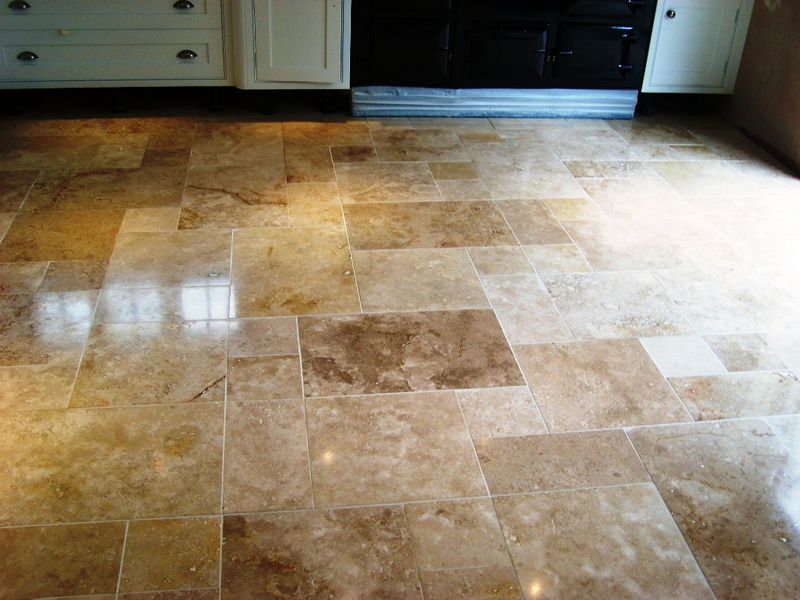
All About Travertine Tile
Travertine tile is a popular choice for homeowners looking to add a touch of elegance and natural beauty to their living spaces. This versatile stone is commonly used for flooring, pavers, and even in bathrooms and kitchens. With its unique characteristics and durability, travertine has become a sought-after material in the world of interior design.
Travertine, a type of natural stone, is formed over millions of years in mineral hot springs. It is a sedimentary rock that is made up of calcite and other mineral deposits. With its distinctive porous structure, travertine offers a one-of-a-kind look that is reminiscent of marble. This makes it a popular choice for homeowners who want the luxurious look of marble but prefer a more affordable option.
The natural beauty of travertine tile makes it a perfect choice for a variety of applications. Its warm tones and unique patterns add a touch of elegance to any space, whether it’s a bathroom, kitchen, or outdoor patio. The durability of travertine also makes it a great option for high-traffic areas, as it can withstand heavy foot traffic and resist wear and tear.
When it comes to maintenance, travertine tile is relatively easy to care for. Regular cleaning and sealing can help keep the stone looking its best and protect it from staining. However, it’s important to note that travertine is a natural material and may develop a patina over time, adding to its unique charm and character.
The Basics of Travertine Tile
Travertine tile is a natural stone tile that is commonly used for various applications in both residential and commercial settings. It is known for its unique appearance and durability, making it a popular choice for kitchens, bathrooms, and outdoor spaces.
Travertine tiles are formed from the deposition of minerals dissolved in groundwater, which then solidify over time to create the distinctive patterns and textures found in the stone. This natural formation process gives each tile a one-of-a-kind look, making it an attractive option for homeowners and designers looking for a unique and timeless flooring material.
One of the key characteristics of travertine tile is its versatility. It can be used for indoor or outdoor applications, including flooring, backsplashes, countertops, and even as pavers for driveways and patios. Its natural beauty and durability make it an ideal choice for high-traffic areas, such as kitchens and hallways.
Travertine tile comes in a variety of finishes, including polished, honed, tumbled, and brushed. Each finish offers a different look and texture, allowing homeowners to choose the style that best suits their design preferences. Whether you prefer a glossy and sleek look or a more rustic and textured appearance, there is a travertine tile finish that will meet your needs.
One important thing to note about travertine tile is that it is a softer stone compared to other natural stones like granite or marble. This means that it may be more prone to scratching and staining, especially in high-traffic areas. To maintain the beauty and longevity of your travertine tile, it is important to properly seal and protect the surface.
In summary, travertine tile is a natural stone tile that offers a unique and timeless beauty. Its versatility, durability, and variety of finishes make it a popular choice for homeowners and designers alike. Whether you’re looking to update your kitchen flooring or create a stunning outdoor patio, travertine tile is a practical and stylish option to consider.
What is Travertine Tile?
Travertine tile is a popular choice for many homeowners when it comes to kitchen and bathroom flooring. It is a type of natural stone that is similar to marble and is known for its unique patterns and textures.
Travertine is formed from the sedimentation of minerals in hot springs and is often found near limestone deposits. It is a versatile material that can be used for a variety of applications, from kitchen countertops to bathroom vanities to outdoor pavers.
One of the main benefits of travertine tile is its durability. It is a strong and sturdy material that can withstand heavy traffic and everyday wear and tear. It is also resistant to moisture, making it an ideal choice for areas that are prone to spills and water damage.
In addition to its durability, travertine tile is also known for its natural beauty. Each tile has its own unique characteristics, with variations in color and pattern that add a touch of elegance and sophistication to any space. The most common colors of travertine tiles are earth tones, such as beige, cream, and brown.
Travertine tile is also a popular choice because of its easy maintenance. Regular cleaning with a mild soap and water solution is usually all that is needed to keep it looking its best. However, it is important to note that travertine is a porous material and can be prone to staining, so it is recommended to seal it periodically to protect against spills and other potential damage.
Overall, travertine tile is a versatile and beautiful option for anyone looking to add a touch of natural elegance to their home. Whether used for kitchen flooring, bathroom walls, or outdoor pavers, its unique patterns and durable nature make it a popular choice among homeowners.
The Benefits of Using Travertine Tile
Travertine tile is a popular choice for homeowners who want a natural stone flooring option that is both beautiful and durable. Here are some of the benefits of using travertine tile:
- Beauty: Travertine tile has a unique and natural beauty that can enhance the look of any room. Its variations in color, pattern, and texture create a rich and luxurious appearance.
- Versatility: Travertine tile can be used in various settings, including bathrooms, kitchens, and outdoor areas. It can be installed as flooring, used for countertops, or even as pavers for your outdoor spaces.
- Durability: Travertine is a strong and durable material that can withstand heavy foot traffic and daily wear and tear. It is less likely to crack or chip compared to other types of tile, such as marble or ceramics.
- Heat Resistance: Travertine tile has natural heat-resistant properties, which makes it an excellent choice for flooring in areas with high temperatures, such as kitchens or outdoor patios.
- Low Maintenance: Travertine tile is relatively easy to clean and maintain. Regular sweeping and occasional mopping with a mild detergent are usually enough to keep it looking its best. Sealing the tile can also help protect it from stains and moisture.
- Environmentally Friendly: Unlike other types of tile, such as ceramic or porcelain, travertine is a natural stone that does not require extensive energy to manufacture. It is also biodegradable, making it an environmentally friendly choice.
- Value for Money: While travertine tile may be more expensive than some other flooring options, its durability and timeless beauty make it a worthwhile investment. It can increase the value of your home and last for many years with proper care.
In conclusion, travertine tile offers numerous benefits, including its beauty, versatility, durability, heat resistance, low maintenance requirements, environmental friendliness, and value for money. Consider using travertine tile for your next flooring or tiling project to enjoy these advantages.
Types of Travertine Tile
Travertine is a natural stone that is commonly used for various applications such as pavers, tiles, and flooring. It is a type of sedimentary rock that is formed from mineral deposits in bodies of water such as hot springs and caves. Travertine has a unique and beautiful appearance, making it a popular choice for many homeowners.
There are several types of travertine tile available, each with its own characteristics and uses. Here are some of the most common types:
- Honed Travertine: This type of travertine has a smooth, matte finish. It is a popular choice for indoor applications such as flooring in kitchens and bathrooms. Honed travertine is known for its versatility and timeless appeal.
- Tumbled Travertine: Tumbled travertine has a rough, textured surface that adds a rustic and aged look to any space. It is commonly used for outdoor applications such as patios and pool decks due to its slip-resistant nature.
- Polished Travertine: Polished travertine has a glossy, reflective surface that enhances the natural colors and patterns of the stone. It is often used for indoor applications such as countertops and backsplashes in kitchens and bathrooms.
- Brushed Travertine: Brushed travertine has a lightly textured surface that gives it a soft and weathered look. It is a popular choice for both indoor and outdoor applications, as its texture helps to hide scratches and wear.
- Tumbled and Unfilled Travertine: This type of travertine has a rough, porous surface with unfilled holes. It is commonly used for outdoor applications such as pathways and driveways, as its natural texture allows for better traction.
Travertine tile is available in various colors, including shades of beige, brown, tan, and gray. Its natural veining and patterns add character and uniqueness to any space. Whether you’re looking for a classic and timeless look or a more rustic and aged appeal, there is a type of travertine tile that will suit your style and needs.
How to Choose the Right Travertine Tile
When it comes to selecting the right tile for your home, travertine is a popular choice. This natural stone has a unique, timeless beauty that can elevate the look of any space, whether it’s your bathroom, kitchen, or outdoor patio. Here are some important factors to consider when choosing travertine tile:
- Color: Travertine comes in a range of colors, from light beige to darker shades of brown and gray. Consider the color scheme of your space and choose a tile that complements it. Lighter colors can make a room feel brighter and more spacious, while darker shades add warmth and depth.
- Finish: Travertine tiles are available in different finishes, including polished, honed, brushed, and tumbled. Polished tiles have a glossy, reflective surface, while honed tiles have a smooth, matte finish. Brushed and tumbled tiles have a more rustic, textured look. Consider the style and ambiance you want to create and choose a finish accordingly.
- Size: Travertine tiles come in a variety of sizes, from small mosaic tiles to large format tiles. The size of the tile can impact the overall look of the space. Smaller tiles can create intricate patterns and are often used for backsplashes and accents, while larger tiles are commonly used for flooring and outdoor pavers.
- Grade: Travertine tiles are graded based on their quality and consistency. Higher-grade tiles have fewer imperfections and a more uniform appearance. Lower-grade tiles may have more variations and natural markings. Consider the grade of the tile based on your personal preferences and the desired level of elegance.
- Usage: Consider where the travertine tile will be installed and choose a tile that is suitable for the specific area. For example, polished tiles may be more prone to slipping when used in a bathroom, while tumbled tiles may be a better option for outdoor patios. Consult with a professional if you’re unsure which type of tile is best for your intended use.
Travertine tile is a versatile and durable option for any space. Whether you’re looking to update your bathroom, revamp your kitchen flooring, or create a stunning outdoor patio, consider these factors to choose the right travertine tile that suits your style and needs.
Installing Travertine Tile
Travertine tile is a popular choice for homeowners who want a natural and elegant look in their homes. It can be used in various areas of the house, including the bathroom, kitchen, and even outdoors as pavers. Here is a step-by-step guide on how to install travertine tile.
- Prepare the surface: Before installing travertine tile, make sure the surface is clean, level, and dry. Remove any existing flooring or carpet and repair any cracks or imperfections in the subfloor.
- Measure and layout: Measure the area where you want to install the travertine tile and plan the layout. This will ensure that you have enough tiles and that they are arranged in an aesthetically pleasing pattern.
- Mix the mortar: Follow the manufacturer’s instructions to mix the mortar. Use a trowel to spread the mortar evenly on the surface.
- Lay the tile: Start laying the travertine tile from one corner of the room, working your way towards the opposite corner. Press each tile firmly onto the mortar, making sure it adheres properly.
- Spacing and leveling: Use tile spacers to ensure consistent spacing between each tile. Check the level periodically to ensure that the tiles are laid evenly.
- Grout the tiles: After the tiles have set for the recommended time, remove the spacers and apply grout between the tiles. Use a grout float to spread the grout evenly, making sure to fill all the gaps.
- Clean the tiles: After the grout has dried, use a damp sponge to clean the surface of the tiles and remove any excess grout. Allow the grout to cure for the recommended time.
- Apply a sealer: To protect the travertine tile and enhance its natural beauty, apply a sealer according to the manufacturer’s instructions. This will help prevent stains and make the tile easier to clean.
- Maintain the tile: To keep your travertine tile looking its best, regularly clean it with a mild soap and water solution. Avoid using harsh chemicals or abrasive cleaners that can damage the tile or its finish.
Installing travertine tile can be a rewarding DIY project that adds beauty and value to your home. With proper preparation and care, your travertine tile flooring or pavers will last for many years to come.
Maintaining Travertine Tile
Travertine tile is a natural stone that is often used for flooring and bathroom tile. It is a type of limestone that is similar to marble in terms of its appearance and texture. Travertine tile is known for its durability and natural beauty, but it does require regular maintenance to keep it looking its best.
Here are some tips for maintaining travertine tile:
- Sealing: Travertine tile should be sealed to protect it from stains and damage. A high-quality sealant should be applied to the tile and grout lines to provide a protective barrier.
- Cleaning: Regular cleaning is essential for keeping travertine tile looking its best. It is important to use a non-abrasive cleaner that is specifically designed for natural stone. Avoid using acidic or abrasive cleaners, as they can strip the protective sealant and damage the tile.
- Preventing Scratches: To prevent scratches on travertine tile, it is recommended to use felt pads or coasters on furniture legs, and to avoid dragging heavy objects across the floor. This will help to protect the surface of the tile from scratches and dulling.
- Preventing Stains: Travertine tile is prone to staining, so it is important to wipe up spills immediately. Use a soft cloth or paper towel to blot the spill, rather than rubbing it, as this can spread the stain.
- Regular Maintenance: In addition to regular cleaning, travertine tile should be swept or vacuumed regularly to remove dirt and debris. This will help to prevent scratches and keep the tile looking its best.
By following these tips, you can ensure the longevity and beauty of your travertine tile. With proper maintenance, your travertine tile will continue to enhance the aesthetics of your space for years to come.
Common Issues with Travertine Tile
Travertine tile is a beautiful natural stone that is often used in various applications such as flooring, walls, and countertops. However, like any other material, it has its fair share of common issues that homeowners should be aware of. Understanding these issues can help you make an informed decision about whether or not travertine tile is the right choice for your project.
1. Staining
One of the most common issues with travertine tile is staining. The porous nature of travertine makes it susceptible to absorbing liquids and causing discoloration. This is especially true in areas such as the kitchen and bathroom, where spills and moisture are more likely to occur. To prevent staining, it’s important to seal the tile regularly and clean up any spills immediately.
2. Scratching
Travertine tile, although durable, is softer than other types of natural stone like marble. This means it is more prone to scratching, especially in high-traffic areas or when moving heavy objects such as furniture. To minimize scratching, it’s recommended to use protective pads on furniture and avoid dragging heavy items across the tile.
3. Cracking
Another issue that can occur with travertine tile is cracking. This can happen due to various reasons, such as improper installation, heavy impact, or structural movement. To prevent cracking, it’s essential to hire a professional installer who has experience working with natural stone and ensure that the subfloor is properly prepared.
4. Fading
Over time, travertine tile may experience fading, especially when exposed to direct sunlight. This can cause the colors to become less vibrant and the stone to lose its natural beauty. To prevent fading, it’s recommended to use blinds or curtains to block out direct sunlight, especially in rooms with large windows.
5. Pitting
Pitting is a common issue with travertine tile that occurs as small holes or depressions on the surface. These pits are a natural characteristic of the stone and can add to its rustic charm. However, they can also collect dirt and grime, making them more difficult to clean. Regular sealing and cleaning can help minimize the appearance of pitting.
6. Etching
Travertine tile is susceptible to etching, which occurs when acidic substances come into contact with the surface. This can result in dull spots or marks on the tile, making it lose its shine. To prevent etching, it’s important to clean up spills of acidic liquids such as lemon juice or vinegar immediately and avoid using harsh cleaning products.
Overall, travertine tile is a popular choice for its natural beauty and versatility. However, it’s important to be aware of these common issues and take proper care and maintenance to ensure the longevity and appearance of the tile.
Travertine Tile vs. Other Types of Tile
When it comes to choosing the right tile for your kitchen or bathroom flooring, there are many options to consider. One popular choice is travertine tile, a natural stone that offers a unique and elegant look. However, it’s important to compare travertine tile with other types of tile to determine which one is best suited for your needs.
Travertine tile is a form of limestone that is formed by mineral deposits. It has a distinctive porous texture and comes in a variety of earthy tones, ranging from light beige to deep walnut. Its natural beauty can add warmth and character to any space.
One of the main advantages of travertine tile is its durability. It is a dense and hard material that can withstand high levels of foot traffic, making it an ideal choice for kitchens and bathrooms. It is resistant to scratches and stains, and with proper care, it can last for many years.
In comparison, other types of tile, such as ceramic or porcelain, may lack the natural beauty and warmth of travertine. While these tiles can be durable and easy to maintain, they often have a more uniform appearance that may not be as visually appealing as travertine. Additionally, ceramic and porcelain tiles may not have the same level of versatility in terms of color and texture.
Another popular type of tile is marble, which is a luxurious and timeless material. Like travertine, marble is a natural stone with unique patterns and colors. However, marble is generally more expensive than travertine and may require more maintenance to keep its pristine appearance.
| Travertine | Natural beauty, durability, warm tones | Requires sealing, more expensive than some options |
| Ceramic | Durable, easy to maintain | Uniform appearance, limited color and texture options |
| Porcelain | Durable, low water absorption | Less visually appealing, harder to install |
| Marble | Luxurious, unique patterns | Expensive, requires regular maintenance |
In conclusion, while there are several types of tile to choose from, travertine tile stands out for its natural beauty, durability, and warm tones. It may require more maintenance and come with a higher price tag compared to other options. However, the unique and elegant look of travertine can add a touch of luxury to any kitchen or bathroom.
Where to Use Travertine Tile
Travertine tile is a versatile and attractive choice for a variety of applications in your home. Whether you’re looking to update your kitchen or bathroom or want to add a touch of elegance to your outdoor space, travertine can be used in a variety of ways to enhance the beauty of your home.
Kitchen: Travertine tile can be a stunning addition to your kitchen. Its natural colors and unique patterns can add warmth and character to your space. Whether you choose to use travertine for your countertops, backsplash, or flooring, it can create a beautiful and inviting atmosphere in your kitchen.
Bathroom: Travertine tile is a popular choice for bathroom design. Its natural stone appearance adds a touch of luxury and elegance to any bathroom. You can use travertine for your shower walls, bathroom flooring, or even as an accent wall to create a spa-like atmosphere in your bathroom.
Flooring: Travertine tile is an excellent choice for flooring in any room of your home. Its durability and resistance to moisture make it suitable for high-traffic areas such as the entryway or living room. Additionally, its natural beauty and warm tones can complement any interior design style.
Outdoor Spaces: Travertine pavers are a popular choice for outdoor patios, pool decks, and walkways. They are durable, slip-resistant, and can withstand extreme weather conditions. The natural beauty of travertine pavers can add a touch of elegance and sophistication to your outdoor living spaces.
Whether you’re looking to update your kitchen, add a touch of luxury to your bathroom, or enhance your outdoor space, travertine tile is a versatile and attractive choice. Its natural beauty, durability, and unique patterns make it an excellent option for any home.
Travertine Tile Design Ideas
If you’re looking to add a touch of elegance and natural beauty to your home, travertine tile is the perfect choice. With its unique and intricate patterns, travertine tile can transform any space into a stunning masterpiece. Whether you’re looking to update your kitchen, bathroom, or flooring, these travertine tile design ideas are sure to inspire you.
Kitchen
In the kitchen, travertine tile can add a touch of sophistication and warmth. Consider using travertine tile for your backsplash or countertops. The natural color variations and textures of the tile will create a stunning focal point in your kitchen. Pair it with wood cabinets and stainless steel appliances for a timeless and elegant look.
Bathroom
In the bathroom, travertine tile can create a spa-like retreat. Use travertine tile for your shower walls or flooring to create a luxurious and inviting space. The natural stone texture of travertine will add depth and character to your bathroom while creating a soothing and calming atmosphere.
Flooring
Travertine tile is also an excellent choice for flooring. Whether you’re looking to update your entryway, living room, or hallway, travertine tile will add a touch of elegance to any space. Choose a large format travertine tile in a neutral color for a seamless and timeless look. Pair it with a patterned area rug for added warmth and comfort.
Marble and Stone Accents
To create a truly unique and luxurious look, consider pairing travertine tile with marble and stone accents. Use travertine tile for your main surfaces and incorporate marble or stone mosaics into the design. This combination of natural stones will create a one-of-a-kind look that is both elegant and sophisticated.
Pavers and Outdoor Spaces
Don’t limit travertine tile to just indoor spaces. It is also an excellent choice for outdoor areas. Consider using travertine pavers for your patio or pool deck. The natural stone texture of travertine will create a slip-resistant surface that is perfect for outdoor spaces. Pair it with lush greenery and comfortable outdoor furniture for a serene and inviting outdoor oasis.
Conclusion
Travertine tile offers endless design possibilities for your kitchen, bathroom, flooring, and outdoor spaces. Its natural beauty and unique patterns make it a versatile choice that can elevate the style of any space. Whether you prefer a classic and timeless look or a more contemporary and modern design, travertine tile is sure to inspire and impress.
Cost of Travertine Tile
When it comes to choosing flooring for your bathroom or kitchen, travertine tile is a popular option. This natural stone, similar to marble, can add an elegant touch to any space. However, before making your decision, it’s important to consider the cost of travertine tile.
The cost of travertine tile can vary depending on several factors, including the quality of the stone, the size and thickness of the tiles, and any additional features or finishes. On average, you can expect to pay between $5 and $15 per square foot for travertine tile.
If you’re working on a budget, there are some cost-saving options to consider. One option is to choose smaller tiles, as they tend to be less expensive than larger ones. Additionally, opting for a honed or tumbled finish, which gives the tiles a more rustic look, can often be less expensive than a polished finish.
It’s also important to factor in the cost of installation when considering the overall cost of travertine tile. While some homeowners may choose to install the tile themselves, it’s often recommended to hire a professional to ensure the job is done correctly. The cost of installation can vary depending on the complexity of the project and the location of your home.
Before making a final decision, it’s a good idea to shop around and compare prices from different suppliers. This can help you find the best deal and ensure you’re getting a fair price. Additionally, be sure to factor in any additional costs, such as grout, sealer, and tools, that may be needed for the installation process.
In conclusion, travertine tile can be a beautiful and durable option for your bathroom or kitchen flooring. However, it’s important to consider the cost of the tile and installation before making your final decision. By doing your research and comparing prices, you can find a quality travertine tile that fits within your budget.
Travertine Tile FAQs
1. What is travertine tile?
Travertine tile is a type of natural stone flooring that is made from the sedimentary rock called travertine. It is often used as a flooring material in both indoor and outdoor settings.
2. What are the advantages of using travertine tile?
- Travertine tile is durable and can withstand heavy foot traffic, making it ideal for high-traffic areas like hallways and entranceways.
- It has a beautiful natural appearance with unique patterns and color variations, adding an aesthetic appeal to any space.
- Travertine is a heat-resistant material, which makes it a good choice for areas with hot temperatures.
- It can be used in various areas of the house, including the kitchen, bathroom, and outdoor spaces like patios and pool decks.
3. Can travertine tile be used in the kitchen or bathroom?
Yes, travertine tile is a popular choice for kitchen and bathroom flooring due to its durability and water resistance. However, it is important to properly seal and maintain the tile to prevent staining and water damage.
4. How do I clean and maintain travertine tile?
To clean travertine tile, you should use a mild soap or cleaning solution and a soft cloth or mop. Avoid using abrasive cleaners or tools that can scratch the surface of the tile. Regular sweeping and occasional resealing can help maintain the tile’s appearance and prevent stains.
5. Is travertine tile more expensive than other types of flooring?
Travertine tile can be more expensive than some other flooring options, such as ceramic tile or vinyl flooring. However, it is often considered a luxurious and high-quality material, which can add value to your home. The cost of travertine tile can vary depending on factors such as quality, size, and finish.
6. Can travertine tile be used for outdoor applications?
Yes, travertine tile can be used for outdoor applications such as paving stones for patios or walkways. Its natural durability and resistance to extreme temperatures make it suitable for outdoor use.
7. Is travertine tile the same as marble?
No, travertine tile and marble are different types of natural stone. They have different properties, appearance, and pricing. While both are calcareous rocks, travertine is formed by the rapid precipitation of calcium carbonate in groundwater, while marble is formed by the metamorphism of limestone. Both can be used as flooring materials, but travertine has a more porous texture compared to marble.
Questions and answers:
What is travertine tile?
Travertine tile is a type of natural stone tile that is formed by the precipitation of calcium carbonate. It is a popular choice for flooring and other applications due to its unique appearance and durability.
How is travertine tile formed?
Travertine tile is formed when mineral-rich water percolates through limestone and becomes saturated with calcium carbonate. When the water reaches the surface and evaporates, it leaves behind layers of calcium carbonate, which eventually harden and form travertine.
What are the advantages of using travertine tile?
Travertine tile has several advantages. It is extremely durable and can withstand heavy foot traffic. It is also resistant to scratches and stains. Additionally, travertine tile has a natural beauty and unique texture that can enhance the aesthetic appeal of any space.
How should travertine tile be maintained?
To maintain travertine tile, it is important to regularly clean it with a pH-neutral stone cleaner. Avoid using harsh chemicals or abrasive cleaners, as they can damage the surface of the tile. It is also recommended to seal travertine tile after installation and reapply the sealer periodically to protect it from stains and moisture.
Can travertine tile be used outdoors?
Yes, travertine tile can be used outdoors. It is a versatile material that can withstand various weather conditions. However, it is important to choose a type of travertine that is suitable for outdoor use and to properly seal and maintain the tile to ensure its longevity.
What is travertine tile and where is it used?
Travertine tile is a natural stone tile that is formed from calcium carbonate deposits. It is most commonly used as flooring and wall cladding in residential and commercial buildings.

